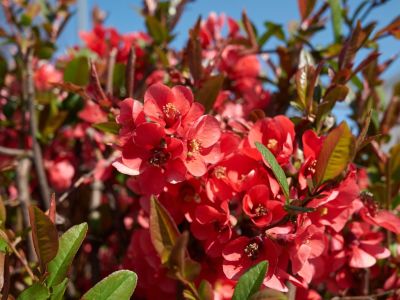Do Quince Trees Make Good Hedges?
Flowering quince is spectacular for a few weeks in late winter to early spring, but a single specimen may seem little more than a tangle of thorny branches. A hedge of quince trees as a mass planting will be even more spectacular early in the season when still yearning for flowers and growing plants. A hedge of flowering or fruiting quince trees makes a perfect screening or security barrier with its spreading form and spiny branches (flowering type). Plus, quince is easy to care for, adaptable, and hardy in USDA zones 4 through 9.
How to Grow a Quince Tree Fruit Hedge
Growing a fruiting quince tree hedge requires very little effort or care. Quince is a nearly indestructible, deciduous shrub or tree that grows to 5 to 10 feet (1.5-3 m.) in height and width. It will grow in almost any soil provided it has good drainage and is not overly fertile. Quince tolerates many types of soil with a pH of anywhere from slightly alkaline to acidic. It is very tolerant to no bearing on flowering or fruit set. Quince can be grown in full sun to partial shade and once established, is quite drought tolerant. The lovely early blooming flowers are followed by yellow edible fruit. Yes, if you were wondering, the fruit of flowering quince is also edible, just smaller, harder, and tarter than those of fruiting quince trees. When making a quince hedge, you can stick with the same cultivar or mix it up. The intoxicating aroma of the fruit as it ripens indoors smells heavenly. The fruit itself is nutrient rich: full of vitamin C (more than in a lemon!) along with the elements potassium, magnesium, iron, copper, zinc, sodium, calcium, and rich in fruit acids. Some quince aficionados swear by jump starting their day with a puree of quince run through a sieve and then sweetened with honey and diluted to taste. Doesn’t sound like a bad way to start the day at all.
